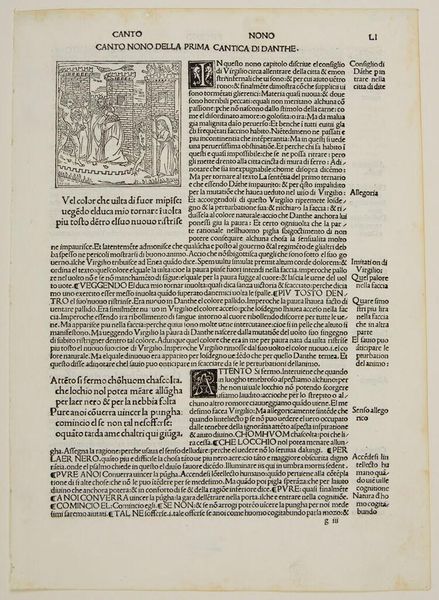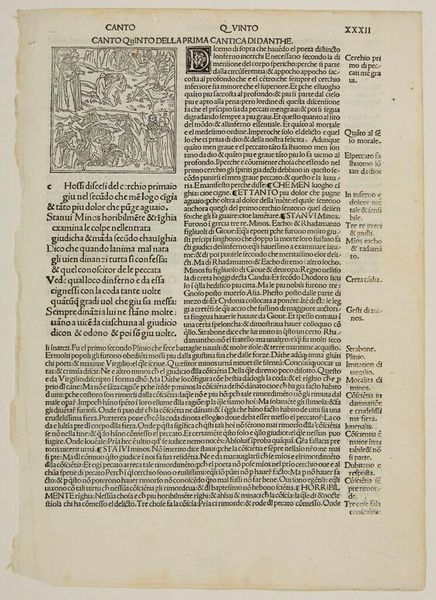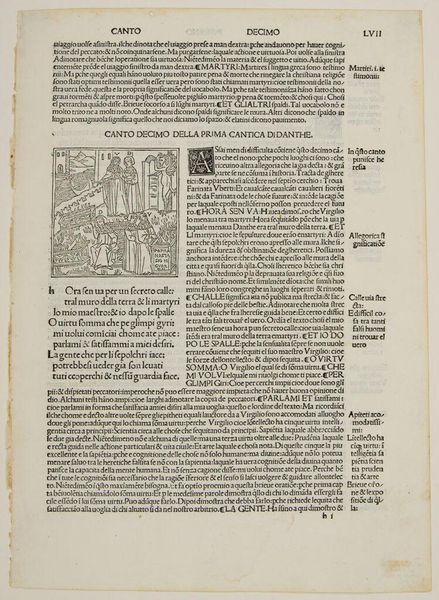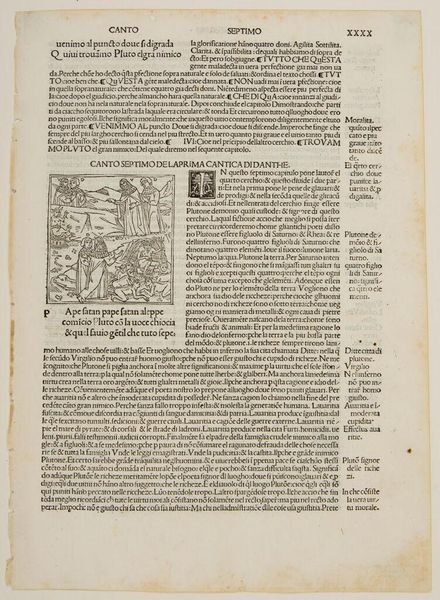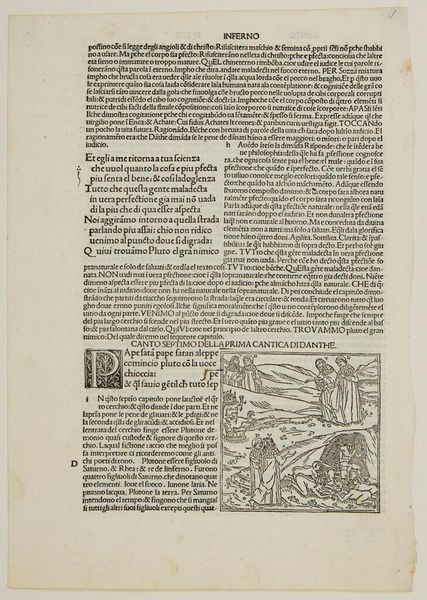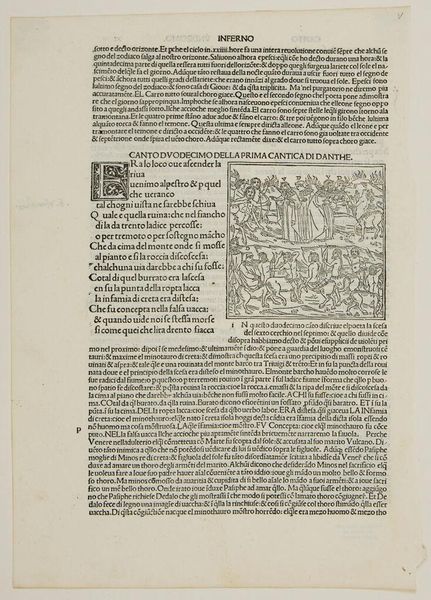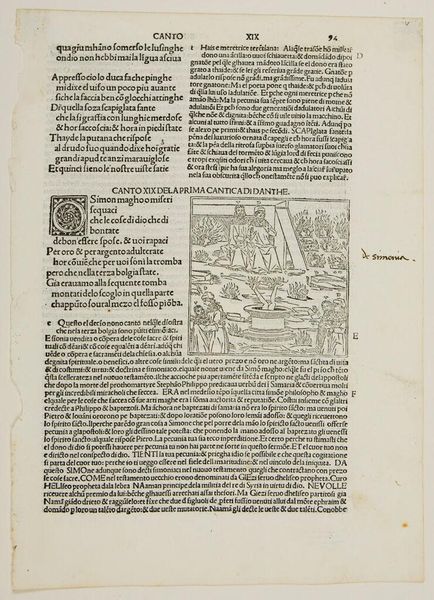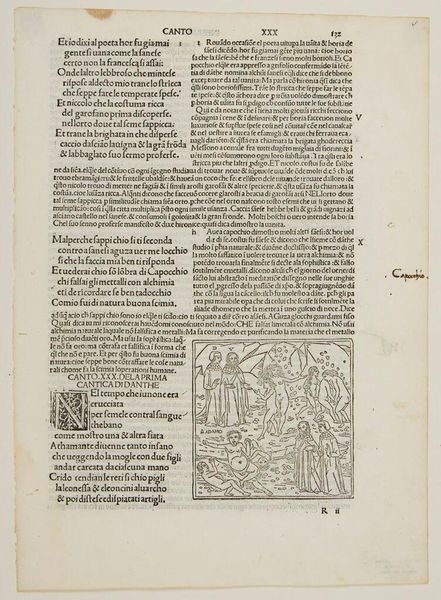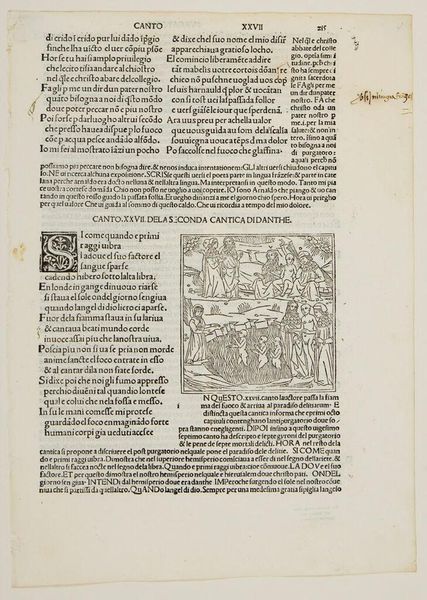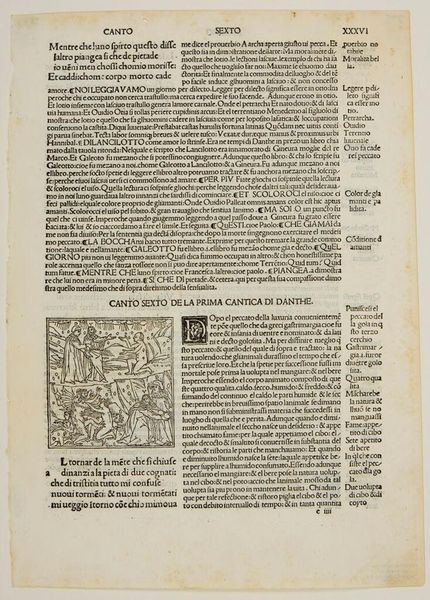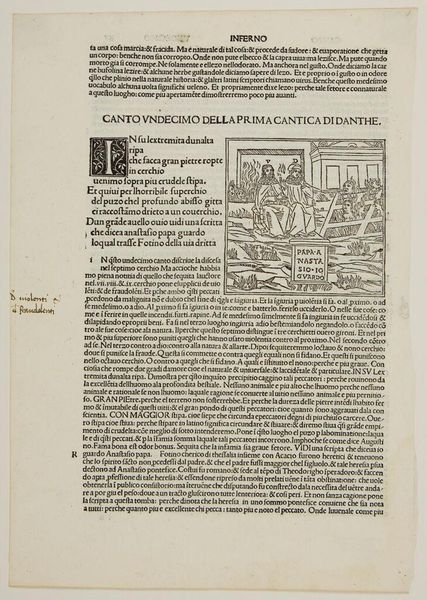
Copyright: CC0 1.0
Curator: So, here we have an anonymous illustration, possibly from an early edition of Dante's *Inferno*. What catches your eye? Editor: It's a dense page! The text surrounds a small woodcut showing figures in a landscape. It feels almost claustrophobic with all the words packed onto the page. What can you tell me about the use of imagery with the text? Curator: The integration of image and text here speaks to the socio-political function of art at the time. Printmaking made visual narratives accessible to a wider audience. This illustration serves as both a visual aid and a form of commentary on Dante's work, influencing the reception of the text. Notice how the illustration is integrated with the text, almost like a footnote. Editor: That’s a great point. It's like the image is there to clarify or emphasize a specific passage. Curator: Exactly. This piece reveals the complex relationship between art, literature, and the burgeoning print culture of the time. The political power of imagery is immense. Editor: It’s fascinating how intertwined the visual and textual elements are, influencing each other's meaning and reach. Curator: Precisely! It prompts us to consider the social role of art and the public understanding of literary narratives throughout history.
Comments
No comments
Be the first to comment and join the conversation on the ultimate creative platform.
